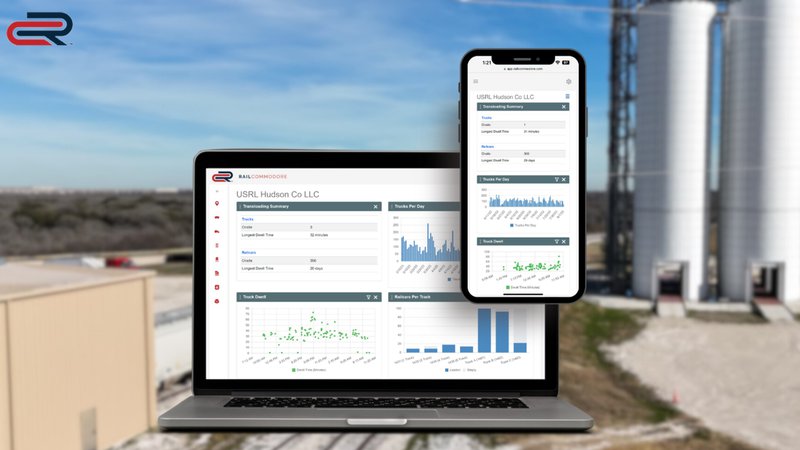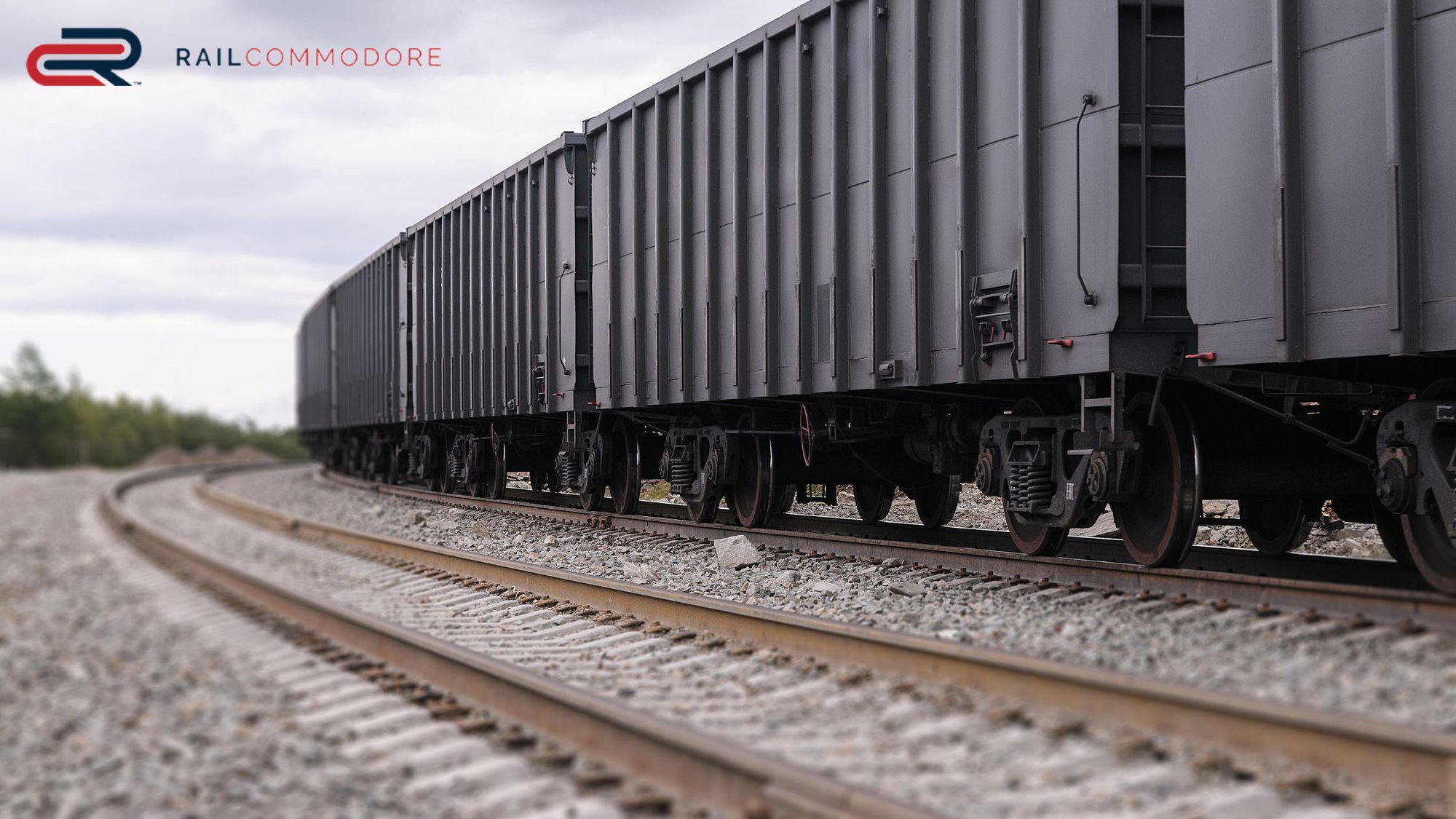Managing rail shipments can be challenging, but transloading software simplifies freight transfers across different transportation modes. If you oversee rail logistics, you know that delays and inefficiencies cost both time and money. The right software automates freight handling, improves tracking, as well as increases supply chain efficiency. Breaking down how transloading software works, outlining its features, and how it streamlines operations will help you determine if it’s right for your business.
Key Takeaways:
- Transloading Software: Automates freight transfers between transport modes, reducing errors, delays, and costs.
- Industries Benefiting: Includes retail, construction, and food logistics.
- Demurrage Tracking Tools: Help avoid unnecessary storage fees by sending reports.
- AI-Driven Automation: Reduces manual work, improves scheduling, and also increases supply chain efficiency.
- Integration with ERP and Freight Management Systems: Simplifies both logistics and billing.
- Barcode and RFID Scanning: Improves accuracy in shipment tracking.

How to Use Transloading Software
Transloading software helps coordinate freight movement between different transportation modes. It automates key processes such as shipment tracking, inventory management, as well as documentation. Without this software, companies must rely on manual tracking, increasing the likelihood of both errors and delays.
By connecting trucks, trains, and ships within a single system, the software simplifies freight handling. When cargo reaches a warehouse or terminal, the system updates the inventory and schedules the next transfer. It also generates shipping documents, such as Bills of Lading (BoL), required for legal transport.
Many industries use transloading software to improve logistics. Retailers transfer shipments from ships to trucks for final delivery. Construction companies move heavy materials from rail to job sites. Food suppliers ensure perishables stay on schedule with automated scheduling features. These industries lower costs and optimize workflows by relying on supply chain automation.
Without modern tools, companies risk high demurrage fees when shipments remain idle for too long. Effective transloading software includes tools like a demurrage tracking system, which sends alerts before fees apply. The software also provides mobile access, allowing teams to update records from any location.
Transloading software improves logistics by reducing errors, preventing delays, as well as cutting costs. It turns complicated freight transfers into seamless, automated processes.
The Essential Features of Transloading Software
The right transloading software helps eliminate inefficiencies in freight management. It enhances shipment monitoring, decreases delays, and makes supply chains more efficient. The most effective solutions provide real-time tracking, inventory control, and also workflow automation.
Real-Time Freight Tracking and Visibility
Tracking freight is one of the most important features. Shippers and logistics teams need to know where shipments are at all times. A freight visibility platform consolidates CLM and AEI data to provide accurate tracking at key checkpoints. This helps companies react quickly to unexpected delays and make informed decisions. RFID tags and barcode scanning enable precise shipment tracking. Many platforms also send notifications for key events, such as arrivals, departures, or route changes.
Accurate tracking leads to cost savings by preventing missed deadlines and reducing demurrage fees. A 2022 study reported that the average demurrage cost per container was $664. Avoiding these fees can significantly cut logistics expenses.
Inventory Tracking and Reconciliation
Maintaining accurate inventory records is essential. Tracking errors can lead to lost shipments or incorrect deliveries. Automated inventory tracking improves accuracy by maintaining real-time shipment records. Instead of relying on manual logs, businesses can access up-to-date inventory counts instantly.
A ResearchGate study showed that 65% of inventory records contain errors often caused by manual data entry. Transloading software helps eliminate these mistakes with automated reconciliation features. These tools compare expected stock levels with actual counts, leading to quickly flagging discrepancies. Some systems even provide 3D yard depictions, helping teams locate shipments quickly.
Automation and AI-Driven Workflows
Manual processes slow operations and increase errors. Automation eliminates repetitive tasks, while AI optimizes workflows by scheduling shipments and reducing paperwork.
For example, transloading software can generate Bills of Lading (BoL) automatically, which reduces errors and saves time. Some systems also send automated Proof of Delivery (PoD) emails, improving customer communication and minimizing delivery disputes.
One of the most valuable features is demurrage tracking, which monitors how long freight remains at a facility and sends alerts before penalties apply. This proved beneficial in 2022 when detention and demurrage charges dropped 98% for companies using automation tools.
RailCommodore's transloading software takes automation to the next level by offering seamless integration with existing ERP systems, enhancing data accuracy across all platforms. The software provides real-time updates on shipment status through advanced IoT sensors, ensuring precise tracking from origin to destination.
From real-time monitoring to intelligent inventory solutions, freight visibility platforms make supply chains more efficient and cost-effective.
How Transloading Software Improves Logistics Efficiency
Transloading software improves logistics by optimizing routes, reducing fuel costs, as well as increasing delivery speed. By minimizing waiting times for trucks and trains, businesses cut expenses related to delays.
The software integrates with warehouse and transportation management systems. It helps to track shipments at every stage, from unloading at ports to final delivery. Real-time updates allow warehouses to prepare for incoming freight, reducing bottlenecks and preventing errors. Demurrage and detention fees decrease when shipments move smoothly through terminals.
For logistics teams managing inbound and outbound freight, scheduling is critical. Automated dock scheduling and inventory management prevent delays by ensuring shipments load and unload efficiently. The software also supports barcode and QR code scanning, reducing errors while keeping inventory records updated.
With logistics management software, businesses can coordinate multimodal transportation, moving goods between trains, trucks, and ships without disruptions. Integration with a transportation management system centralizes shipment data, improving efficiency. Learn more about software specifically designed for rail logistics.
For warehouses, digital scanning solutions support better efficiency by improving shipment tracking.
The Advantages of Automated Freight Handling
Automated freight handling improves accuracy by eliminating manual errors. Freight handling automation tracks shipments using scanners, sensors, and software. This ensures that cargo is recorded and placed correctly. It also reduces delivery mistakes and keeps customers informed with real-time updates.
Automation also improves security and regulatory compliance. Digital systems log every step of a shipment’s journey, preventing lost cargo and improving traceability. Many digital freight solutions verify container weight, cargo type, and storage conditions, which ensures compliance with shipping regulations. Learn more about freight security and automation’s role in reducing risks.
Cost savings are another key benefit. Logistics workflow automation reduces the need for manual sorting, scanning, and paperwork. This allows workers to focus on higher-value tasks. Faster processing times result in lower labor costs and an overall increase in efficiency.
How Transloading Software Solutions Compare
The best transloading software aligns with business needs, budget, and industry requirements. Some solutions specialize in specific sectors, while others offer comprehensive freight management tools.
RailCommodore’s transloading software provides a comprehensive solution for rail logistics, improving visibility, reporting, and efficiency. Our platform combines real-time tracking with advanced automation to streamline your operations and reduce costs. Whether you need customizable Bill of Lading (BoL) templates or automated proof of delivery (PoD) emails, RailCommodore has the features to meet your needs.
Feature Comparison
Look for solutions offering customizable Bill of Lading (BoL) templates, mobile accessibility, and container analytics for compliance. Inventory tracking and automated proof of delivery (PoD) emails enhance efficiency and accuracy. Demurrage tracking tools and barcode scanning improve cost management and reduce manual errors.
Pricing and Cost
Pricing models vary by features and company size. Some platforms charge per shipment, while others have flat monthly fees. Cloud-based options reduce IT expenses by eliminating on-site server requirements.
Customer Feedback
Users favor transloading software that reduces manual data entry and improves shipment accuracy. Many value real-time tracking and automated alerts. On the other hand, common complaints stem from steep learning curves or high initial costs.
Selecting the right transloading software depends on business priorities. The best choice improves efficiency while also keeping costs manageable.
The Future of Your Transloading Technology
Contact us today to schedule a demo and see how RailCommodore can optimize your rail operations and transform your logistics. Let RailCommodore help your business achieve both cost savings and supply chain efficiency.

Leave a Reply